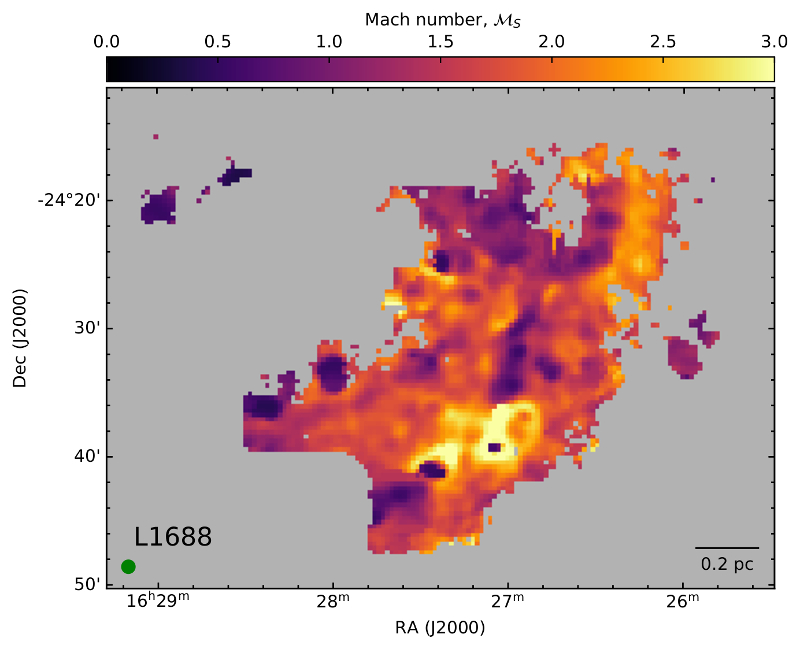| EPoS Contribution |
|
First detection of temperature transition from cloud to cores and of a broad component towards cores
Spandan Choudhury MPE, Garching, DE | |
| Star formation takes place in the cold, dense cores in molecular clouds. Previous observations show that the dense cores exhibit sub-sonic non-thermal velocity dispersions. In contrast, the ambient molecular cloud shows warmer gas, with supersonic velocity dispersions. The transition to coherence is sharp, however, the temperature change from cores to molecular cloud has not been observed in the same tracer. We use the NH3 (1,1) and (2,2) data towards L1688 from the Green Bank Ammonia Survey (GAS) to address these questions. We smooth them to a larger beam of 1 arcmin to obtain extended maps of kinetic temperature and velocity dispersion. We are able to measure, for the first time, the kinetic temperature of the broad supersonic component seen in the surrounding cloud around dense cores, and therefore, can determine the Mach number of the gas in the extended cloud (see figure). We then identify the coherent cores as the regions with Mach number<1. We measure a change in kinetic temperature of ~5 K, and in the Mach number between 0.8 and 1.8 between cores and the surrounding cloud. Furthermore, we look at the average spectra towards those cores to study the kinematical properties with unprecedented sensitivity. For the first time, we detect a faint (mean NH3 (1,1) peak brightness of 0.25 K in TMB), supersonic (Mach number>1) component towards all coherent cores. Since the component is very faint, it could not be detected or fit in previous NH3 observations, but it still has a substantial effect on the derived physical parameters. The single-component fit to the NH3 data overestimates both the temperature and velocity dispersion in the cores, when compared to a two-component fit, on average by 11%, and 34%, respectively. This affects the detailed physical structure and dynamical stability analysis of the cores, showing the importance of deep observations towards cores. | |
 | |
| Caption: Map of the sonic Mach number in L1688. The beam is shown in the bottom left corner, and the scale bar is shown in the bottom right corner. | |
| Collaborators: J.E. Pineda, MPE, DE P. Caselli, MPE, DE A. Ginsburg, U Florida, US S.S.R Offner, UT Austin, US E. Rosolowski, U Alberta, CA R.K. Friesen, U Toronto, CA F.O. Alves, MPE, DE A. Chacon-Tanarro, OAN-IGN, ES E. Redaelli, MPE, DE H. Kirk, U Victoria/NRC, CA P.C. Myers, CfA, US P.G. Martin, U Toronto, CA Y. Shirley, Steward Obs, US |
Suggested Session:
Cores |

